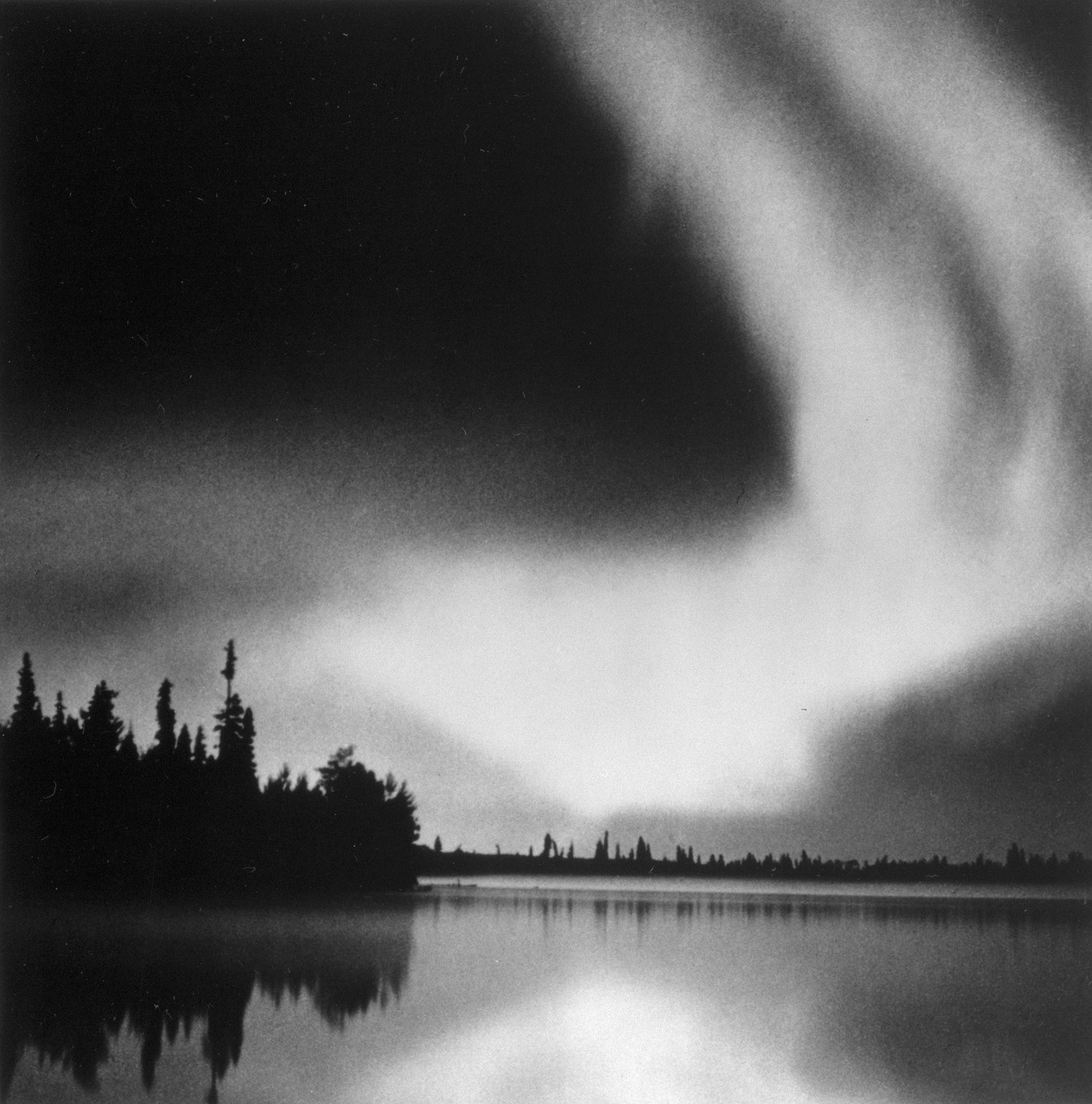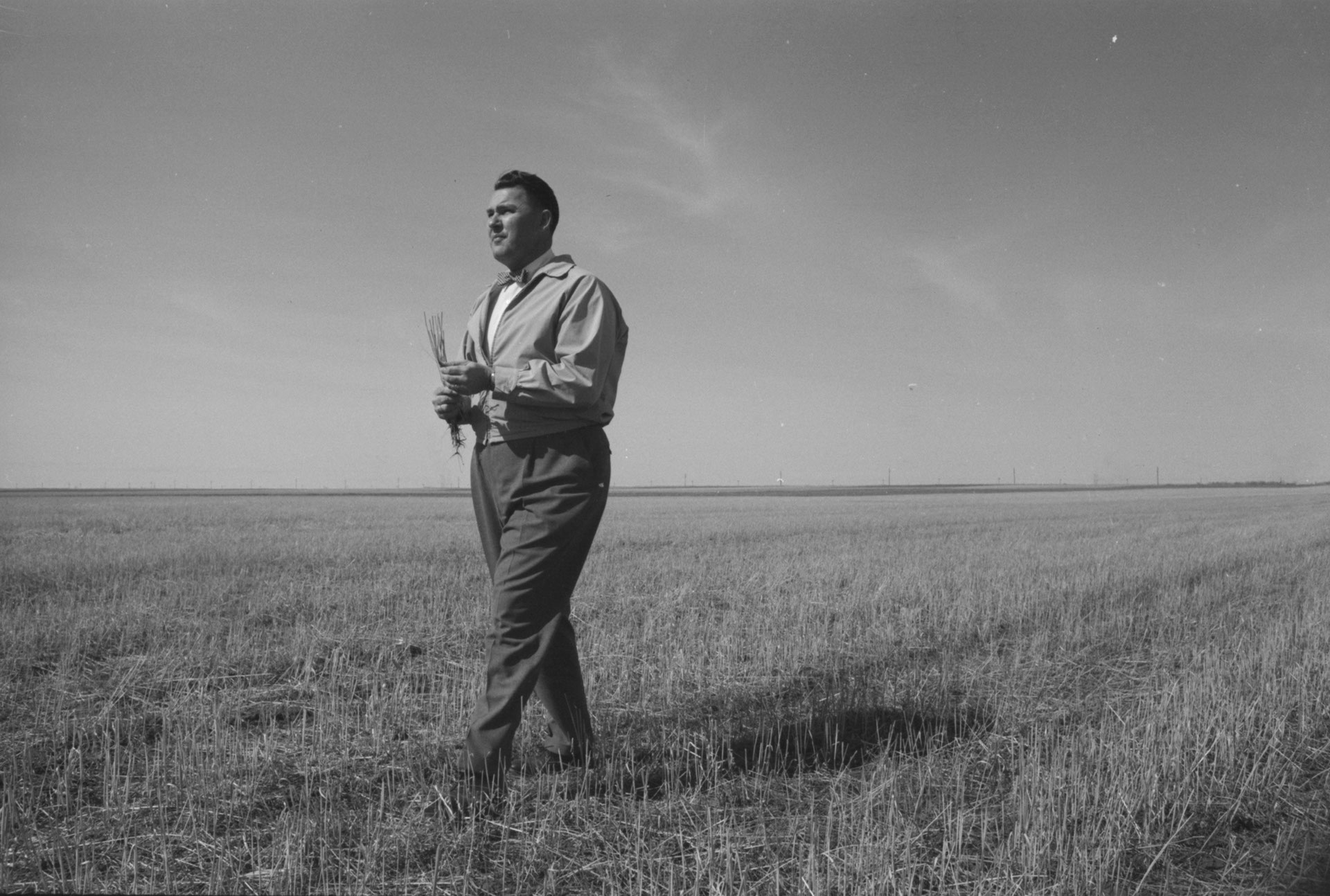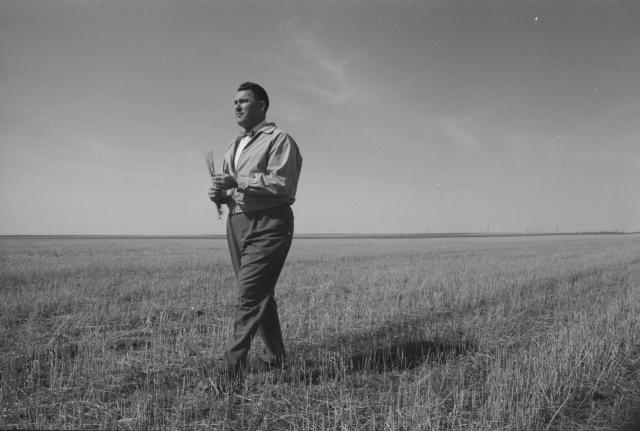
Photostory #417: Mysterious, Unseen Force Affects Basic Life: Canadian Scientist's Intriguing Discovery
Photographers
,
Maker
National Film Board of Canada
Release Date
May 24, 1966
Collection
CMCP fonds
Credit Line
Canadian Museum of Contemporary Photography fonds, National Gallery of Canada Library and Archives
Main Text
Earthly magnetism - which with gravity forms one of the two most baffling phenomena of the universe - has been found by the Canada department of agriculture to have marked effects on several forms of plant life. This discovery, which may soon lead to changes in planting patterns by certain wheat farmers and provoke deeper studies by botanists and geneticists in the future, was made by anagronomist Urban Pittman of the Lethbridge, Alberta, agricultural research station. Noting that the few rows of winter wheat planted in an east-west direction on the borders of experimental plots grew quicker and stronger than the others, he probed for the cause, made the startling discovery that nearly all root systems grew north-south - in line with the earth's magnetic field. Wheat planted in rows running north-south, as is the custom to retard erosion by the westerly winds, means that the roots of one plant compete for nourishment with those of its neighbors. Rows planted east-west mean roots systems keep separate and the plants thrive. Confirmation of the initial discovery with further experiments in Newfoundland, 2,700 miles away, where the direction of magnetic north is radically different (by 48 degrees), was followed by an even more startling discovery when laboratory studies involving the exposure in artificial magnetic fields of various seeds before germination increased their rate of growth even more. For Canada, with vast national interests in agriculture, such discoveries from continuing research programs are of immediate economic concern, and to world science are a fascinating contribution in an increasingly vital field.
Subjects:
Locations:














